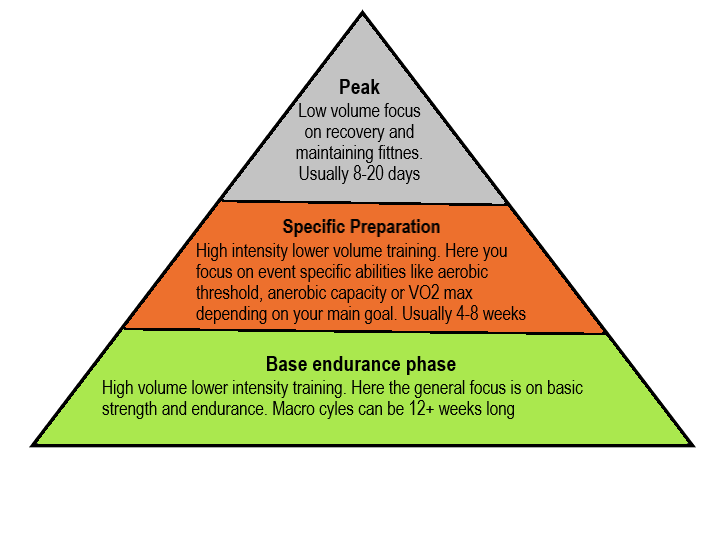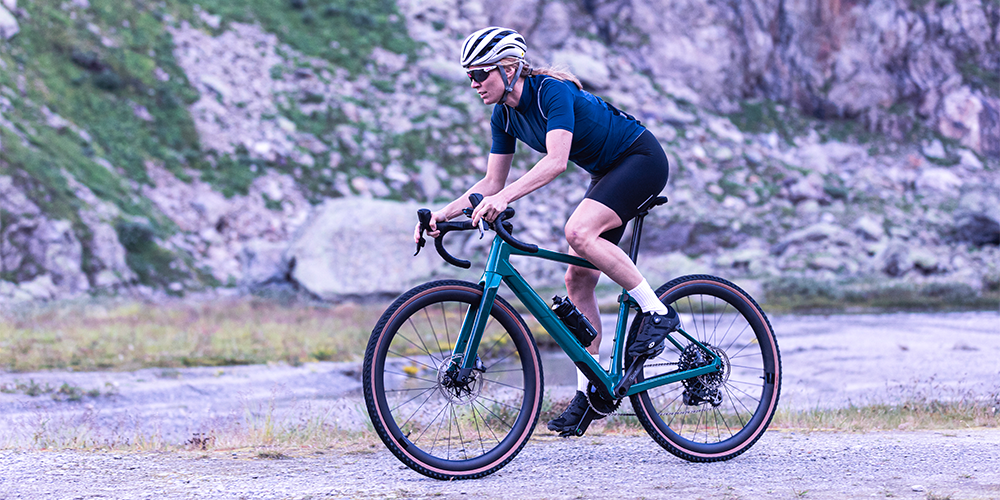For endurance athletes, the winter season usually coincides with the so-called ‘base training’ phase. During this period, we work on the foundations of training in view of the planned main competition. In this article we describe what base training is, why it plays a key role in athletic preparation and how it is integrated by 2PEAK into the training plan.
Training Periodization
With the onset of winter months, it can be more challenging to find the necessary motivation to go out and train in the cold, darkness and bad weather. However, after an off-season, it is time to get back on track and resume training. Especially if we have already planned the season (how to plan your season with 2PEAK) and wish to participate in a race in the coming months, we must respect the periodization of our training plan. Indicating a main race, along with its related preparatory and training races, is essential for effective season planning.
Periodization is the process of methodically splitting up your training into specific cycles of endurance, intensity and recovery, according to the time of year when you want to reach peak performance. This process ensures continuous progress due to the principle of optimizing adaptation, which is the goal of training. There are different types of periodization, and 2PEAK uses different ones depending on the goals and experience of the athletes.
If training is therefore divided into cycles, winter often coincides with what is known as ‘base training’, i.e. the most critical and important phase of the year, where the base for the whole season is built up.
What is base training, and why is it so important?
If athletic training were a pyramid, we would now be at its base. Building a solid foundation before performing the specific exercises will allow us to better support the weight of the pyramid, and reach a higher peak at the right time.
 This phase consists of low-intensity workouts that serve to develop and strengthen aerobic endurance, which in turn allows you to tackle high-intensity work to your maximum capacity in the following months, and thus prepare your body for the high efforts of competition.
This phase consists of low-intensity workouts that serve to develop and strengthen aerobic endurance, which in turn allows you to tackle high-intensity work to your maximum capacity in the following months, and thus prepare your body for the high efforts of competition.
Since cycling and triathlon are endurance sports, having a good aerobic energy system is essential in these disciplines. Indeed, it represents the main source of energy during prolonged exertion. This is why base training aims to increase aerobic capacity and muscular endurance.
In cycling in particular, it is important to increase the performance of the muscles, especially the amount of work the muscles can do without the support of the aerobic energy system. This is achieved by increasing the muscles’ ability to absorb and use oxygen (aerobic capacity). The higher the aerobic capacity, the more work the muscles can do before they become tired and performance declines. This is possible thanks to several physiological adaptations of the body:
- Improvement of the capillary system
- Increased mitochondrial density
- Optimisation of fat metabolism
- Training of the cardiovascular system
Together, these adaptations result in greater extraction of oxygen from the muscle, and consequently better aerobic capacity. Work at aerobic intensity mainly uses fats for energy, while anaerobic exercise uses carbohydrates. Through base training, the body learns to utilize oxygen and fat more effectively, increasing the level of athletic performance.
It is recommended to integrate muscle strengthening exercises (cycling and running), functional training and technique training into this phase.
How, when and how much
Base training usually lasts between 6 and 12 weeks, depending on the athletic level and how many seasons you already have in your legs. It takes place at the beginning of the training season (about 3-6 months before the main competition), and precedes the specific training phase. Base training also includes exercises at a high pace. However, you should not yet focus too much on intensity, otherwise you run the risk of reaching a premature peak of form.
In order to develop basic endurance, training should mainly be in zone 2 for a long period, in order to make greater use of the aerobic energy system. The maximum heart rate should be between 55-75%, ideally at 95-105 rpm.
While base training for running and cycling is built on longer sessions at low/moderate intensity (even indoors on colder days), in swimming it is not a matter of doing laps in the pool for as long as possible. You need to maintain a certain intensity, and make the training varied and fun with technical and playful exercises.
Attention, don’t forget the intensity!
Finally, it is important to emphasize the following: base training does not just mean grinding out kilometres in endless runs or bike rides in the winter frost. An effective training programme includes high-intensity efforts and an appropriate ratio of work to regeneration. Therefore, do not hesitate to integrate intensive exercises (above 90 % of maximum heart rate) to maintain fitness.
Training philosophies can vary, and also depend on the type of athlete. This is why the best solution is to adopt a customized training plan. 2PEAK training plans use different types of periodization for different athletes, depending on their goals and experience, and always adapt dynamically.
Create a training plan for triathlon, cycling, and running based on artificial intelligence with 2PEAK that adapts to your performance after each training session. Download the app and start revolutionizing your training.


